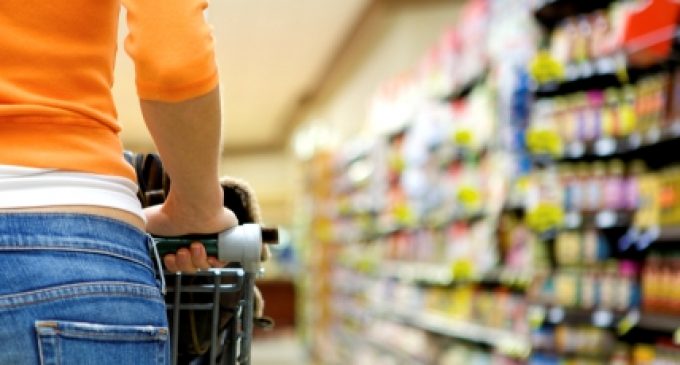UK Supermarkets Sweep Up 17 Months of Growth

UK supermarket sales have increased in value by 3.1% compared with last year according to the latest grocery market share figures from Kantar Worldpanel, for the 12 weeks to 8 October 2017. This marks the 17th period of growth in a row for Britain’s grocers. Like-for-like grocery inflation remains at 3.2% but consumers could be welcoming a slowdown in price rises in the New Year, with the rate projected to fall below 2% in the first quarter of 2018.
Recent stories about the poultry supply chain have not materially dented chicken sales; fresh poultry sales have remained flat in the month of September, while chilled processed poultry has increased in value by 6%.
Meanwhile, Christmas has already started in the supermarket aisles. £69 million of chocolate confectionary boxes were sold in the last four weeks – a near threefold increase on sales in August; mince pies reached sales of £4 million and the British public spent £1.1 million on Christmas puddings.
It’s a mixed picture for the major retailers – each of the big four has grown sales but seen a decrease in market share as smaller operators continue to entice new customers through their doors.
Fraser McKevitt, head of retail and consumer insight at Kantar Worldpanel, explains: “Morrisons was the fastest growing of the large supermarkets this period, increasing sales by 2.8%. The biggest wins came from frozen foods and healthcare products – frozen fish rose by 19% while vitamins and supplement sales were up 23% as consumers bed in for winter. Growing sales at Morrisons’ bricks and mortar stores were supplemented by rapid expansion on its e-commerce platform, particularly in London and the south where online sales have risen 29%. Despite the growth, however, the retailer’s overall market share fell by 0.1 percentage points to 10.3%.”
Closely following Morrisons, the remaining big four have each continued to increase sales every month since April. At Tesco, sales grew by 2.1% though share was down 0.3 percentage points to 27.9%. Asda meanwhile has sustained its recent recovery, with sales up 1.8% in the past 12 weeks.
Fraser McKevitt adds: “Despite traditionally selling a higher proportion of brands than its major rivals it is own-label sales which are driving the growth at Asda. They now account for 45% of sales, with Asda’s value-focused Farm Stores line and premium Extra Special range leading the charge.”
Sales at Sainsbury’s increased 1.9% on last year while market share now stands at 15.8%, down 0.2 percentage points. Only 35% of Sainsbury’s sales are now through price-cut deals, down sharply from nearly 40% a year ago as part of the retailer’s ongoing programme of scaling back the overall level of promotions.
Fraser McKevitt points out: “Aldi and Lidl collectively added an additional £390 million in sales this quarter, which accounts for half of the entire market’s overall growth this period.” Lidl remains Britain’s fastest growing supermarket, up by 16.0%, while Aldi grew by 13.4%. Share increased for both retailers by 0.6 percentage points, up to 5.2% of the market for Lidl and 6.8% for Aldi.
Waitrose sales increased by 2.3% though in contrast share fell by 0.1% to 5.3%. Despite the fall Waitrose has again pulled ahead of Lidl in terms of market share – the premium retailer is traditionally stronger in the latter stages of the year as consumers start trading up for the Christmas period.
At Co-op, sales fell back by 2.5% and market share fell to 6.2%, a drop of 0.3 percentage points. Iceland’s sales grew by 2.6% -notably, it is the only bricks and mortar retailer other than Aldi and Lidl not to lose market share this period.
Online sales growth has slowed to 6.7% from a recent high of 21.9% in October 2014. Ocado’s sales increase of 8.7% means it continues to win share of the online market. With only 18% of the population buying groceries online in the latest 12 weeks, online specialists and the traditional supermarkets will both be looking to capitalise on the potential for long-term growth through Internet sales.


































